In this NewsFlash, we find out why pandemic 'flu seems to kill the least vulnerable, how parasitic worms treat bowel disease and why summer babies have more regular body clocks. Plus, we find out how the discovery of bacteria that can thrive on toxic arsenic may force us to reconsider the chemistry of life on Earth, and elsewhere...
In this episode
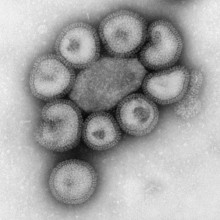
00:25 - Why pandemic flu kills the (apparently) least vulnerable
Why pandemic flu kills the (apparently) least vulnerable
Researchers in Buenos Aires and Nashville have come one step closer to finding out why it is that those members of a population who should be the fittest (i.e. young and middle-aged adults) are the most likely to die during a pandemic flu outbreak.
The most recent bout of flu to receive media attention was in 2009 with H1N1 or swine flu. It killed 17,000 people worldwide during its peak. Fernando Polack and colleagues found that the elderly were spared the worst of this outbreak and that the very young suffered a much milder form of the disease than the adults. They suggest that the killer of these young and middle-aged adults was their own immune system.
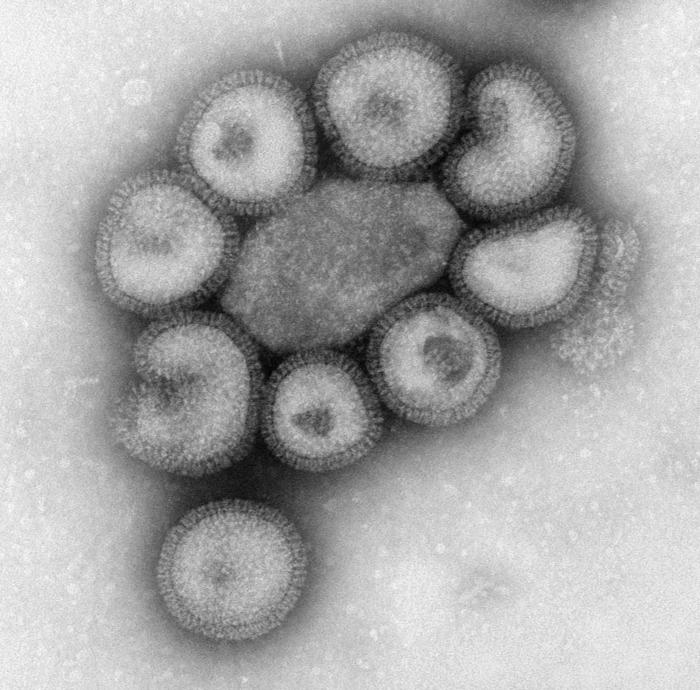 Publishing in Nature Letters, the researchers took sections of the lungs of victims of the 2009 pandemic and found that their lung tissues were inflamed, heavily damaged, had traces of H1N1 but had huge amounts of the biomarker C4d. C4d is a by-product of the body's immune response, so it's a good indicator of how vigorously your body is fighting an infection.
Publishing in Nature Letters, the researchers took sections of the lungs of victims of the 2009 pandemic and found that their lung tissues were inflamed, heavily damaged, had traces of H1N1 but had huge amounts of the biomarker C4d. C4d is a by-product of the body's immune response, so it's a good indicator of how vigorously your body is fighting an infection.
The researchers also looked through some lung sections from victims of a previous H1N1 pandemic in 1957. From these aged samples they again found evidence of a strong immune response. What they think is happening is that the immune system in these individuals mounts a response based upon its knowledge of bog-standard seasonal flu. This immune response is ineffective against H1N1 but it is vigorous and so it ends up killing the patient.
The researchers hypothesise that the elderly escape because they were exposed to the previous pandemic, in 1957. And they think that the young escape because their immune systems haven't been trained by 'ordinary', seasonal flu. So the next step is to find out who has the immune system which is most likely to overreact to pandemic flu and the authors think genetic testing will be key.
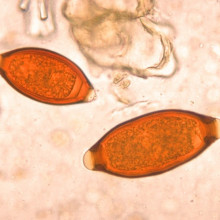
03:10 - How worms can treat bowel diseases
How worms can treat bowel diseases
For many years scientists have known that carrying intestinal parasites seems to reduce the risks of inflammatory diseases and allergies. But now a patient treating himself with a dose of worms to combat inflammatory bowel disease has given doctors a unique insight into how such a benefit might arise.
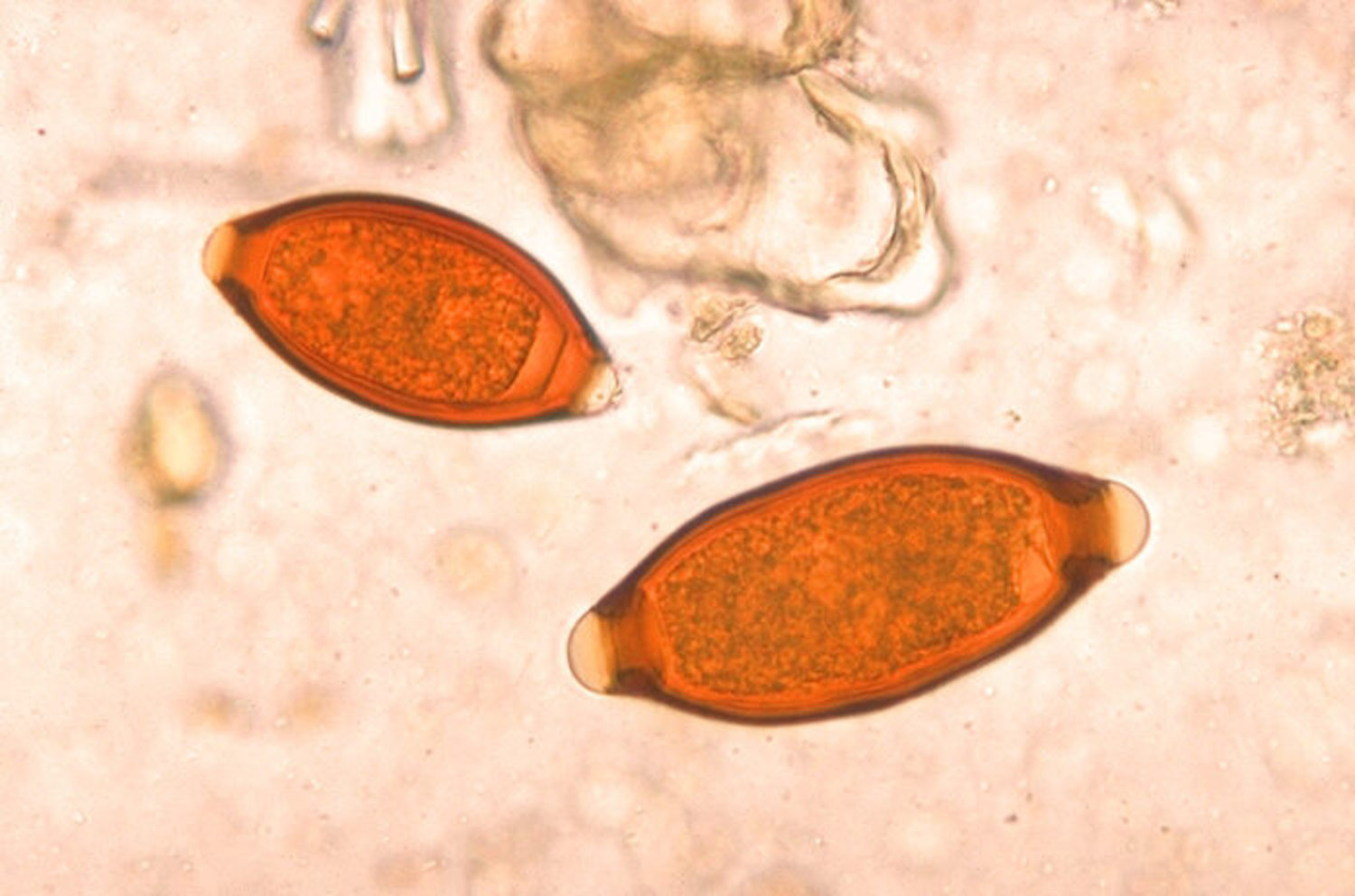 Writing in Science Translational Medicine, University of California, San Francisco scientist Mara Broadhurst and her colleagues present the case of a 35 year old man with a history of ulcerative colitis, an inflammatory condition of the large intestine that causes pain, bleeding and diarrhoea and carries a risk of colonic cancer.
Writing in Science Translational Medicine, University of California, San Francisco scientist Mara Broadhurst and her colleagues present the case of a 35 year old man with a history of ulcerative colitis, an inflammatory condition of the large intestine that causes pain, bleeding and diarrhoea and carries a risk of colonic cancer.
But rather than undergo a colectomy to remove a severely diseased segment of his bowel, the patient instead elected to infect himself with 1500 eggs of the human roundworm, Trichuris trichiura, which establishes a long-term colonisation of the human large intestine. Shortly after the patient ingested the worm eggs his symptoms resolved and telescope camera studies of the bowel showed that the previously inflammed tissue was now apparently normal. The patient experienced a few mild flare ups of his symptoms but otherwise remained well for 3 years.
When his symptoms began to return the researchers noticed that the number of worm eggs present in the man's faeces had dropped, suggesting that the worm burden in his bowel had also decreased, thus explaining the return of the symptoms. This was confirmed with further colonoscopies that showed that areas of the bowel where the worm count was low now had signs of the disease returning. At this point the patient re-dosed himself with a further 2000 worm eggs and again his symptoms remitted.
As they had been following his progress throughout, the medical team had been able to take samples from the bowel during the course of the investigation, which they analysed biochemically, anatomically and genetically.
The results show clearly that in disease-affected areas of the gut there is intense inflammation and the presence of large amounts of an inflammatory hormone called IL17. But in the worm-treated intestinal samples the inflammation was absent and there were also large numbers of cells secreting an additional immune signal called IL22. This factor appears to stimulate the growth of epithelial cells that line the intestine, promoting healing, and also increase the secretion of protective mucus, helping to shield the gut wall from inflammatory stimuli. This reaction is intended to rid the bowel of the worms, but appears to have the effect of promoting healing.
This study therefore offers unique insights into how worm-therapies might work to combat inflammatory and allergic conditions. However, the team do point out that worm infestations can cause malnutrition, bowel inflammation and other complications, especially in children. Studies like this might therefore lead to the creation of an artificial "pseudoworm" that could have the therapeutic benefits but without the risks...
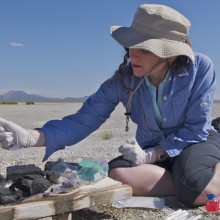
07:44 - Thriving on Arsenic - Rethinking the Chemistry of Life
Thriving on Arsenic - Rethinking the Chemistry of Life
Professor Paul Davies, Arizona State University
Chris - This week, a team from Arizona State University have announced the discovery of bacteria that can thrive in an environment laced with arsenic. This is a chemical that's normally very toxic, but not only can this bacteria tolerate it, they can even use arsenic instead of phosphorus which is normally a critical element in DNA. Professor Paul Davis from Arizona State University is one of the authors on that paper which announces the discovery this week in Science, and he is with us now. Hello, Paul...
Paul - Hello. Welcome from Arizona.
Chris - Thank you. First of all, what actually is the bacterium that you've been studying and how did you come to isolate it?
![Scanning electron micrographs of strain GFAJ-1 under a condition discussed in the text: -As/+P. Please see figure 1 in the manuscript for more information.</p><p>[Image courtesy of Science/AAAS] (c) Image courtesy of Science/AAAS GFAJ-1 - bacteria that thrive on Arsenic](/sites/default/files/media/wolfesimon1HR.jpg) Paul - It's a common garden bacteria - it's not a weirdo. It didn't stand out as being anything odd. And if it wasn't for the brilliant insights of my colleague Felisa Wolfe-Simon, who incidentally is now working at the US Geological Survey in Menlo Park, then we would never have known that there was any amazing arsenic capabilities, but she had a hunch some years ago which we then developed here at ASU into a full hypothesis. There could be organisms that can replace phosphorus with arsenic, these would be, as it were, arsenic life, and she went to look for them in Mono Lake in California which is heavily contaminated with arsenic. So, it was a shrewd place to look but we would never have known if she hadn't fed them on diets with huge amounts of arsenic and zero phosphorus.
Paul - It's a common garden bacteria - it's not a weirdo. It didn't stand out as being anything odd. And if it wasn't for the brilliant insights of my colleague Felisa Wolfe-Simon, who incidentally is now working at the US Geological Survey in Menlo Park, then we would never have known that there was any amazing arsenic capabilities, but she had a hunch some years ago which we then developed here at ASU into a full hypothesis. There could be organisms that can replace phosphorus with arsenic, these would be, as it were, arsenic life, and she went to look for them in Mono Lake in California which is heavily contaminated with arsenic. So, it was a shrewd place to look but we would never have known if she hadn't fed them on diets with huge amounts of arsenic and zero phosphorus.
Chris - So what happened was she initially got the samples of bacteria from the lake which are tolerating a degree of arsenic in the environment and then by forcing them to live in an environment that's very arsenic-rich with no phosphorus, they were able to substitute arsenic into their actual behaviour, biochemically, in terms of DNA, lipids, and everything else that keeps their cells going, and use arsenic in place of phosphorus.
Paul - Absolutely right. They took the arsenic into their vital innards - this was an important point. Of course ideally, we wanted to go somewhere where there was much more arsenic and much less phosphorus, and there are places on Earth, like deep ocean volcanic vents but they're expensive to get to, Mono Lake is convenient. Also, there has been work down there by Ron Omland at the US Geological Survey studying organisms that flirt with arsenic, but nobody other than Felisa and a handful of us had really expected to find anything that did more than that flirtation, that would actually take the arsenic into their innards and use it to substitute the phosphorus. And so, this is the first because all along, biologists have assumed that all life is built out of the basic toolkit of six elements: carbon, hydrogen, nitrogen, oxygen, phosphorus, and sulphur. And here, we have an organism that departs from that basic tool kit.
Chris - Chemically, why is it possible for this bacterium to substitute arsenic for this - what we previously thought of as absolutely critical element - phosphorus.
Paul - Well, arsenic is a poison precisely because it looks chemically like phosphorus and so, that's the reason that led us to think that this might happen, but we don't understand the mechanism. We don't know who's shifting the gears inside these little bugs, what actually is going on. All we could tell is the phosphorus is getting replaced by the arsenic. Ideally of course, we'd like to find an organism that right from the outset is arsenic through and through, and for which phosphorus is a poison. This is not it. This has dual capability. It likes phosphorus. It likes arsenic. It can deal with both and so, it can sort of mix and match, but the Holy Grail would be to find one that was an arsenic organism by obligation, not by choice.
Chris - But I think the point is, and the point that you make very well in your paper, is that this shows that if we complacently think that all life has to be based around these six building blocks that you've mentioned, one of them being phosphorus - actually, this is not true and we have an example here on Earth of how an organism can substitute a completely different element into its life. And therefore, this suggests that the opportunities for life to exist in an entirely different way than the way we understand here on Earth could well exist in outer space.
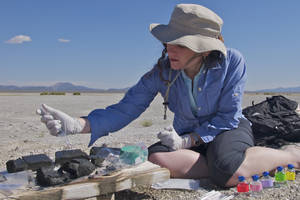 Paul - That's right. Well not perhaps outer space, but on a planet or moon that was rich in arsenic, but I think it proves an even more exciting point and that is, that you could have radically alternative forms of life, hiding in plain sight, right under our noses, just looking like any common or garden microbes. You can't tell by looking with microbes - what they're made of, what makes them tick. This study is part of the broader context to look for what we call a 'shadow biosphere,' or the search to see whether Earth hosts more than one fundamentally different form of life. Is there just one Tree of Life with lots of interesting branches, or might there be more than one tree? Now this particular organism is clearly on the same Tree of Life as you and me, but it does show because you can't tell by looking, that there may be even bigger surprises in store and if we follow the arsenic, see where that goes, we might find that we have an organism which simply can't even be fitted on the same Tree of Life as you and me, and that would show that life on Earth has started more than once and the implications of that are literally cosmic.
Paul - That's right. Well not perhaps outer space, but on a planet or moon that was rich in arsenic, but I think it proves an even more exciting point and that is, that you could have radically alternative forms of life, hiding in plain sight, right under our noses, just looking like any common or garden microbes. You can't tell by looking with microbes - what they're made of, what makes them tick. This study is part of the broader context to look for what we call a 'shadow biosphere,' or the search to see whether Earth hosts more than one fundamentally different form of life. Is there just one Tree of Life with lots of interesting branches, or might there be more than one tree? Now this particular organism is clearly on the same Tree of Life as you and me, but it does show because you can't tell by looking, that there may be even bigger surprises in store and if we follow the arsenic, see where that goes, we might find that we have an organism which simply can't even be fitted on the same Tree of Life as you and me, and that would show that life on Earth has started more than once and the implications of that are literally cosmic.
Chris - I was going to say that the life we see on Earth today is life which is adapted to the planet as it is now. If we were to wind the clock back 4 ½ billion years to the very early Earth, it was a very different place. It's possible that there were organisms like this abounding, and they were replaced by the ones that suit the planet as it is today.
Paul - Yes. The more conservative interpretation of this is that this is a sort of latter day adaptation to tolerate high arsenic conditions. But the more exciting possibility as you mentioned is that maybe life started out going down the arsenic route, for the simple reason that the favourite place among astrobiologists for life to begin are the deep ocean volcanic trenches where there's a sort of chemical brew being stirred around by the heat of the volcano. If that's the case, well, it's laced with arsenic down there, it's a very arsenic-rich environment and so it makes sense to think that maybe life started out with arsenic and only when it spread, then it started making use of phosphorus. So these things could be like living fossils, a hangover from those ancient days. It's too soon to say yet because we need other examples. If we have a whole collection of arsenic microbes, we could begin to do a phylogenetic tree, we can begin to see how ancient they are, how ancient the genes are, but it's early days yet.
Chris - And just to finish this off Paul, you've done this for arsenic, but what about the other elements that we know are critical for life? Is it possible that other neighbours in the periodic table of elements that are again chemically similar in the same way that arsenic is to phosphorus could be substituted in life, and therefore, we have other organisms that are using entirely different chemicals instead of those carbon, hydrogen, nitrogen, oxygen, sulphur, and phosphorus?
Paul - Well it's rash to rule anything out in this game of course, but the favourite is carbon being replaced by silicon, and that's so popular, it even made it to an episode of Star Trek. So, we have to take it seriously. But my chemist friends tell me that that's a pretty tough one and I think carbon would be the last to go, but we do have to take a look say, at sulphur, and also the possibility of the fact that possibly, phosphorus could be replaced with something other than arsenic. So, I think this is going to open the eyes of microbiologists and encourage people to look in a much wider range of locations, a much wider suite of chemistry than we have dealt with either two.
Chris - Should always take Star Trek seriously. Paul, thank you very much. That's Paul Davis from Arizona State University.

15:47 - Summer babies have more regular body clocks
Summer babies have more regular body clocks
Researchers in Nashville have found that the season in which mice are born can dramatically affect how their body clocks work in later life. Mice born in the summertime were better at adapting their body clocks to night/day changes than those born in the winter.
Publishing this week in Nature Neuroscience, Douglas McMahon and colleagues reared mice in artificially-engineered seasons. Some were raised with more 'daylight', emulating summer and some were exposed to more night time as they grew up.
 Another sub-section of the mice were then exposed to a different 'season' during adolescence and finally, once they reached adulthood, all of the mice were put into darkness so that the researchers could observe how they scheduled their activities.
Another sub-section of the mice were then exposed to a different 'season' during adolescence and finally, once they reached adulthood, all of the mice were put into darkness so that the researchers could observe how they scheduled their activities.
The winter mice in this environment slowed all their activities whereas the summer mice maintained a regular day-night cycle. So the researchers think that the circadian rhythm is actually imprinted on the brain during a key period in the mouse's development.
They also say that a "strikingly similar response" is present in people who suffer from SAD - seasonal affective disorder. The next step will be to find out exactly when this seasonal imprinting occurs.
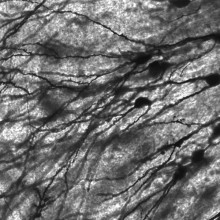
17:40 - Drug that can wipe away pain memories
Drug that can wipe away pain memories
Scientists have discovered that they can switch off chronic pain by wiping out the brain's memory for the event that caused the discomfort. Chronic pain is a significant health problem for sufferers and also places a considerable economic and treatment burden on healthcare providers. But now, in a paper published this week in the journal Science, researchers have shown that certain kinds of pain sensation are very much "in the mind" and can be erased with a drug.
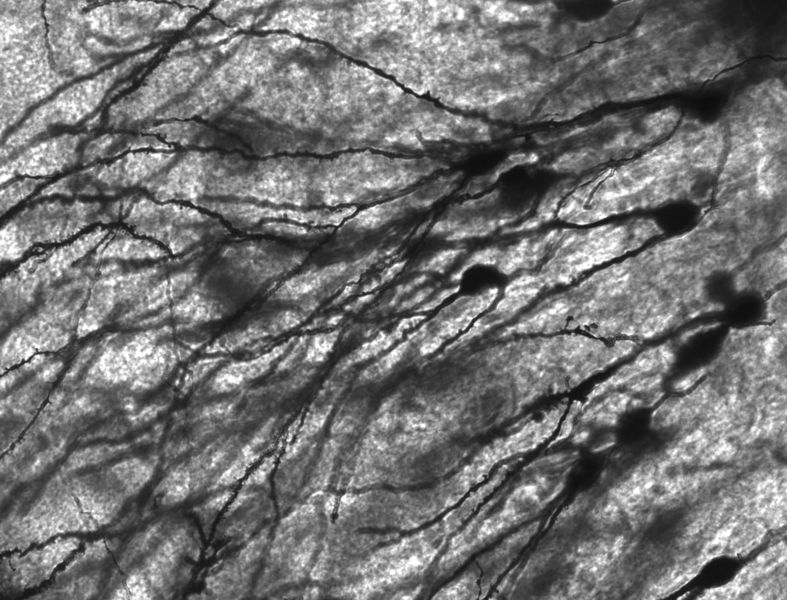 University of Toronto scientist Xiang-Yao Li made the discovery by working with mice genetically engineered to express a glowing green gene in neurones that had been affected by nerve injuries. When the common peroneal nerve, which supplies the hind limb was ligated in a group of mice, cells in the front part of the brain called the anterior cingulate cortex, lit up green. At the same time these animals showed signs of developing allodynia - or neuropathic pain - a condition of enhanced sensation in which normally innocuous stimuli - such as light brushing of a patch of affected skin - are experienced as extremely painful.
University of Toronto scientist Xiang-Yao Li made the discovery by working with mice genetically engineered to express a glowing green gene in neurones that had been affected by nerve injuries. When the common peroneal nerve, which supplies the hind limb was ligated in a group of mice, cells in the front part of the brain called the anterior cingulate cortex, lit up green. At the same time these animals showed signs of developing allodynia - or neuropathic pain - a condition of enhanced sensation in which normally innocuous stimuli - such as light brushing of a patch of affected skin - are experienced as extremely painful.
But when the team injected a chemical called ZIP (which stands for zeta-pseudosubstrate inhibitory peptide) into the anterior cingulate cortex, the allodynia symptoms vanished. ZIP inhibits an enzyme called phosphokinase M zeta (PKM-zeta).
This appears to play a critical role in controlling the strength of the synaptic connections between nerve cells. So when something is learned, PKM-zeta increases its activity in the synapse and sensitises the target nerve cells to nerve transmitter chemicals. PKM-zeta also promotes its own activity, helping to sustain nerve connections in their learned state.
But if ZIP is injected, this inhibits the enzyme, weakening the nerve connection and also preventing further PKM-zeta activity. Effectively it wipes away learning, and when injected into the anterior cingulate cortex the fact that it was able to make symptoms of allodynia disappear in awake animals indicates that some chronic pain states are "learned" by the brain and that it might be possible to use approaches like this to wipe the neurological slate clean and reset pain thresholds in patients.
Related Content
- Previous Can I drink through my bottom?
- Next Electrifying the Future










Comments
Add a comment